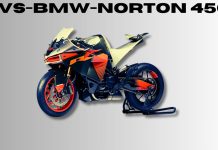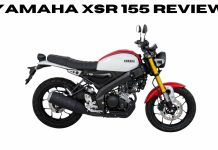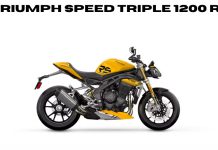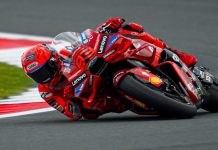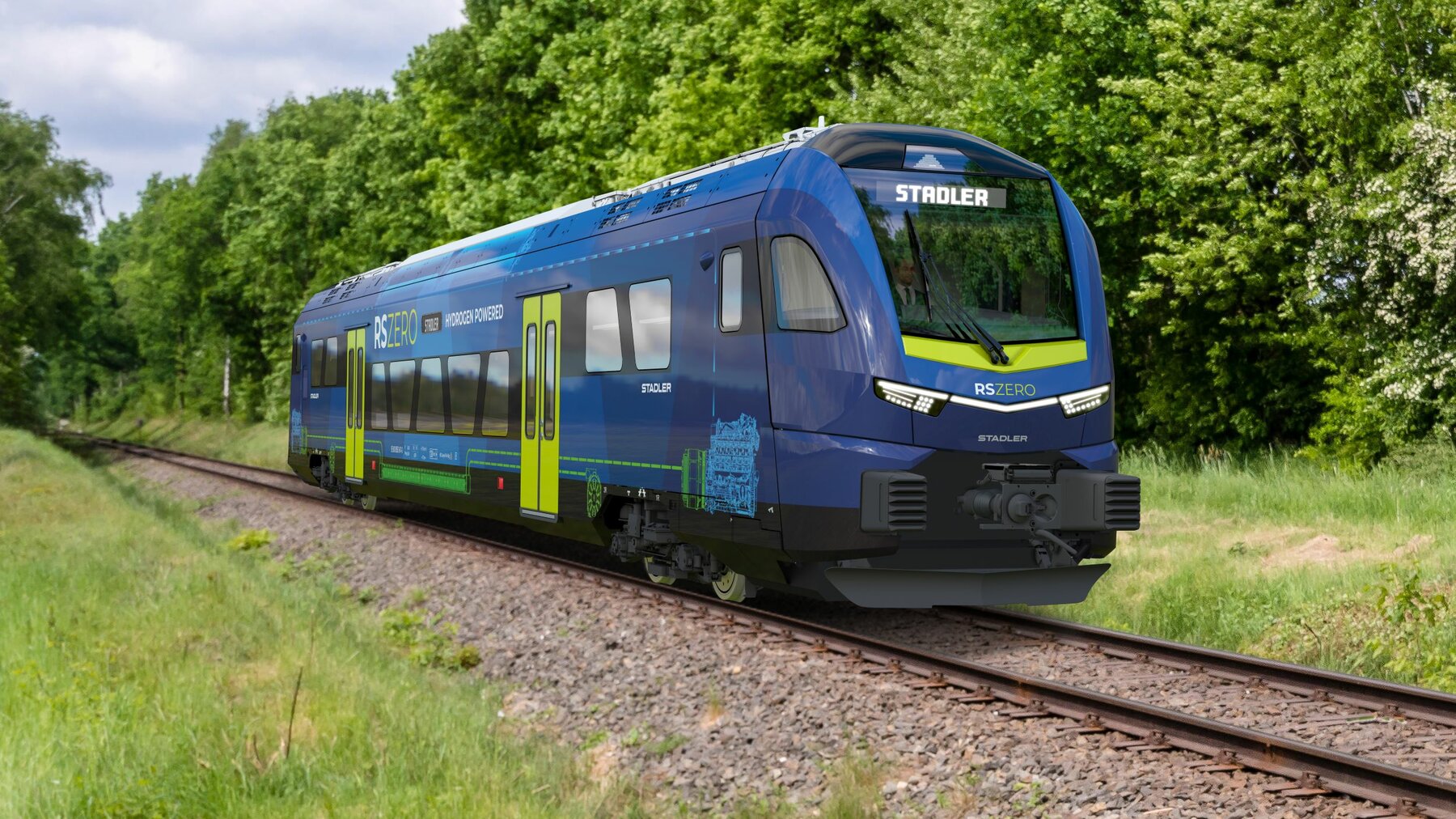In the ever-evolving world of rail transport, Stadler’s latest innovation, the RS ZERO, emerges as a game-changer. Building on the legacy of the Regio-Shuttle RS1, this new model promises a cleaner, greener, and more efficient future for regional rail transport.
With a choice of hydrogen and battery powertrains, Stadler sets new standards for environmentally friendly rail solutions.
The Legacy of the Regio-Shuttle RS1
Before exploring the futuristic features of the RS ZERO, it’s essential to appreciate the foundation laid by its predecessor, the RS1. Launched nearly three decades ago, the RS1 quickly became a favorite in German regional rail transport, with approximately 500 units still operational in Germany and the Czech Republic.
Its popularity stemmed from its reliability, design, and ability to handle various rail networks effectively. The RS1’s success provided a strong platform for Stadler to innovate further, leading to the development of the RS ZERO.
RS ZERO: What Sets It Apart?
Environmentally Friendly Powertrains
The most significant leap forward with the RS ZERO is its powertrain options. Offering both hydrogen and battery-powered variants, the RS ZERO represents a major step towards reducing carbon emissions in rail transport.
The hydrogen model generates power through a fuel cell, emitting water vapor, while the battery version offers a quiet and clean alternative, perfect for non-electrified rail lines.
Strengths:
- CO2 Emission-Free Operation: Both hydrogen and battery options provide a sustainable alternative to diesel, helping reduce the carbon footprint.
- Adaptability: The ability to switch between hydrogen and battery power depending on the infrastructure available makes the RS ZERO versatile.
- Future-Proofing: Focusing on renewable energy sources ensures the RS ZERO remains relevant as global environmental regulations become stricter.
Weaknesses:
- Infrastructure Dependency: Hydrogen refueling stations and charging points are not yet widespread, limiting the immediate deployment of these trains.
- Initial Costs: The investment required for hydrogen fuel cell technology and battery infrastructure can be high, which might deter some regions from adopting it quickly.
Design: A Blend of Tradition and Modernity
The RS ZERO maintains the classic trapezoidal window strips of the RS1, a nod to its successful predecessor. However, it introduces a futuristic edge with a sleek, aerodynamic profile and modern LED wing lighting, making it visually appealing and functional.
Strengths:
- Iconic Design: Retaining elements of the RS1 helps maintain brand recognition and continuity.
- Modern Aesthetics: The updated design looks good and is optimized for aerodynamic efficiency, reducing energy consumption.
Weaknesses:
- Limited Customization: While the design is appealing, the aesthetic appeal may not translate into functional benefits for all operators, limiting the train’s appeal to some regions.

Technological Openness: Meeting Diverse Needs
With 38% of Germany’s and 43% of Europe’s rail lines not electrified, the RS ZERO’s flexibility is a crucial advantage. It can operate on both electrified and non-electrified tracks, using either hydrogen or battery power as needed.
This adaptability makes it a practical solution for rail operators looking to reduce emissions without investing heavily in electrification infrastructure.
Strengths:
- Versatility: The RS ZERO can adapt to different rail conditions, making it suitable for various markets.
- Cost-Efficiency: Eliminating the need for extensive electrification projects offers a cost-effective solution for expanding green rail networks.
Weaknesses:
- Reliance on Emerging Technologies: The effectiveness of hydrogen and battery power is still being proven in large-scale applications, which might concern some potential operators.
- Maintenance Challenges: New technology often comes with a learning curve for maintenance teams, which could initially increase operational costs.
Comfort and Accessibility: Prioritizing Passenger Experience
The RS ZERO focuses on passenger comfort and accessibility. The train offers a low entry height, step-free low-floor areas, and barrier-free access, ideal for passengers with limited mobility.
The prototype showcased various seating options, from standard seats to lounge and comfort zones, demonstrating its versatility in catering to different passenger needs.
Strengths:
- Accessibility: The design is inclusive, making it easier for people with disabilities to use public transport.
- Comfort: Different seating arrangements and spacious interiors enhance passenger comfort, likely increasing ridership.
Weaknesses:
- Space Utilization: Focusing on comfort could mean fewer seats, potentially reducing the train’s capacity compared to more traditional designs.
- Cost Implications: Premium seating options and accessibility features may increase the overall cost, potentially making the RS ZERO more expensive than its less sophisticated counterparts.
Sustainability: Beyond the Drive System
Stadler’s commitment to sustainability extends beyond the RS ZERO’s powertrain. The train’s interior features sustainable materials, such as flooring made from 98% renewable raw materials and side wall panels from recycled PET bottles. Even the air conditioning system uses a climate-friendly refrigerant, showcasing Stadler’s holistic approach to environmentally friendly design.
Strengths:
- Holistic Sustainability: Every aspect of the RS ZERO, from the drive system to the materials used, reflects Stadler’s commitment to reducing environmental impact.
- Brand Image: Prioritizing sustainability strengthens Stadler’s reputation as a forward-thinking, environmentally responsible company.
Weaknesses:
- Durability of Materials: Using sustainable materials, while environmentally friendly, may raise concerns about durability and long-term maintenance.
- Cost: High-quality, sustainable materials can be more expensive, potentially increasing the RS ZERO’s overall cost.
The Future Outlook: Driving Towards a CO2-Neutral Future
With the RS ZERO, Stadler sets a precedent for future developments in regional rail transport. Providing a solution both environmentally friendly and versatile addresses the current challenges of non-electrified rail lines and offers a viable alternative for the future.
As the world moves towards stricter environmental regulations, the RS ZERO’s innovative approach places Stadler at the forefront of sustainable rail technology.
Challenges Ahead
While the RS ZERO represents a significant advancement, challenges remain. Widespread adoption of hydrogen and battery-powered trains will depend on the development of the necessary infrastructure.
Additionally, the high initial costs associated with these technologies may slow down their deployment. However, as more regions commit to reducing their carbon footprint, the demand for trains like the RS ZERO likely increases, encouraging investment in the required infrastructure.
A Promising Start
The RS ZERO prototype will be showcased at InnoTrans 2024, offering industry leaders and potential buyers a firsthand look at what the future of rail transport could look like. With Stadler’s strong track record of innovation and quality, the RS ZERO is poised to become a key player in the next generation of regional trains.
Conclusion: A Step Forward for Sustainable Rail Transport
The introduction of the RS ZERO marks a significant step forward in the journey toward sustainable rail transport. Offering a train combines state-of-the-art technology with a commitment to environmental responsibility, Stadler meets the needs of today’s rail operators and paves the way for the future.
The RS ZERO is more than just a train; it’s a statement of intent—a commitment to creating a cleaner, greener, and more efficient future for rail travel.
Will the RS ZERO revolutionize regional rail transport? If Stadler’s past success is any indication, the answer is a resounding yes.
With its innovative approach to sustainable transport, the RS ZERO is set to lead the charge in the transition to CO2-neutral rail travel, promising a future where efficiency meets sustainability without compromise.



